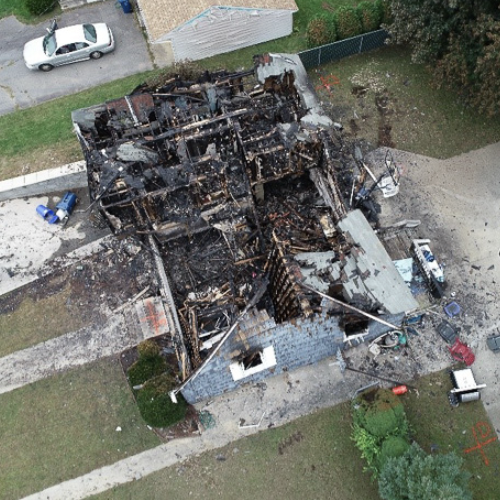On the Spot
by Brian Hayes
Published 24 May 2008

Wow. Jupiter has sprouted a third red spot. It was just two years ago that the Great Red Spot was joined by a smaller companion, which was quickly dubbed “Junior.” I guess the new red spot, discovered in the past few weeks, will have to be called “III.”
In the view above, from the Hubble Space Telescope, Junior is southwest of the Great Spot, and the new, smallest member of the family is due west of the big one and a little farther downwind. This is a false-color image, constructed by assigning colors to monochromatic images recorded at three wavelengths, but the intent is to correctly render colors as perceived by the human eye. Evidently none of the spots are really red at the moment. If they were all newly discovered right now, we would have the Great Peach of Jupiter and the Two Little Apricots.
When I get beyond merely admiring the glorious, painterly spectacle of this Jello-chiffon dessert in the sky, what fascinates me most is the time scale of the red spot phenomenon. The Great Spot has been there for at least a century or two, and probably much longer. It is a storm, with rapid counterclockwise circulation clearly visible in the time-lapse photos returned by the Voyager I spacecraft in 1979.
Storms are something we can relate to from our earthling experience; we have cyclones here too. But what kind of storm lasts for hundreds of years? Even allowing for the larger spatial scale of events on Jupiter, the Great Spot seems extraordinarily long-lived. The rotation period is roughly one earth-week, which means the spot has survived for something on the order of 10,000 revolutions. And it is geographically stable, too: Although the spot drifts in longitude, it seems to be pinned in latitude, hovering at a swirling boundary between easterly and westerly wind belts.
Very likely, the key to the Great Spot’s longevity is that Jupiter has no continents or other surface irregularities to disrupt the flow of the atmosphere. But that fact makes the uniqueness of the spot somewhat mysterious. If such features can arise spontaneously, purely from the dynamics of the atmospheric flow, like a pearl created without any need for a grain of sand, then why is there just one red spot? You’d think that such storms would develop from time to time wherever conditions were favorable.
And now we have our answer: There’s not just one red spot. But the question of time scales doesn’t entirely go away. It seems implausible that one storm would go on for centuries in lonely splendor, and then suddenly two more would evolve within a couple of years. Perhaps there have been others and we just didn’t notice? Not within the past 50 years, I think. Another possible explanation of this improbable coincidence is that the births of Junior and III are not independent events. All three storms are nearby (at least by Jovian standards) and are surely interacting. If that’s the case, we may not have seen the end of this sequence of events. Will there be more spots? Will they collide or coalesce? Stay tuned.
In the matter of time scales, I can’t help noting that Jupiter has a connection with another epochal event in the modern Internet era. In July of 1994 comet Shoemaker-Levy 9 crashed into Jupiter, and the world followed along via the web. The idea that anyone with a modem could download the images directly from JPL—no waiting for the news media—made quite an impression. The Netscape icon was the apotheosis of this event.
Links:
More third-spot images and explanations of how they were made, from Imre de Pater, UC Berkeley.
Reporting from Science Blog.
Reporting from New Scientist.
A report from the Philippine Daily Inquirer with some background on who first spotted the new spot.
The Wikipedia article on the Great Red Spot (which already has a note on the new one).
Publication history
First publication: 24 May 2008
Converted to Eleventy framework: 22 April 2025



